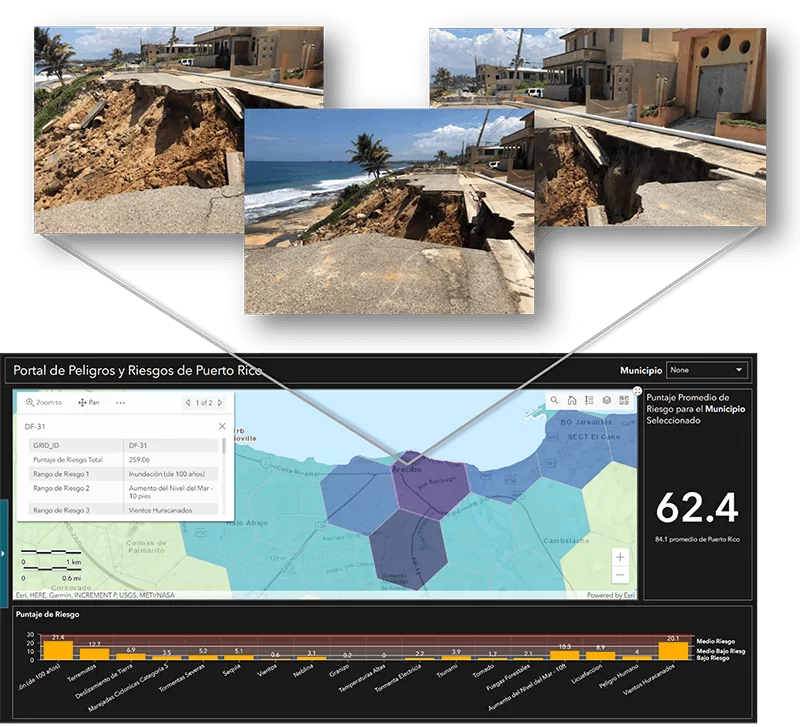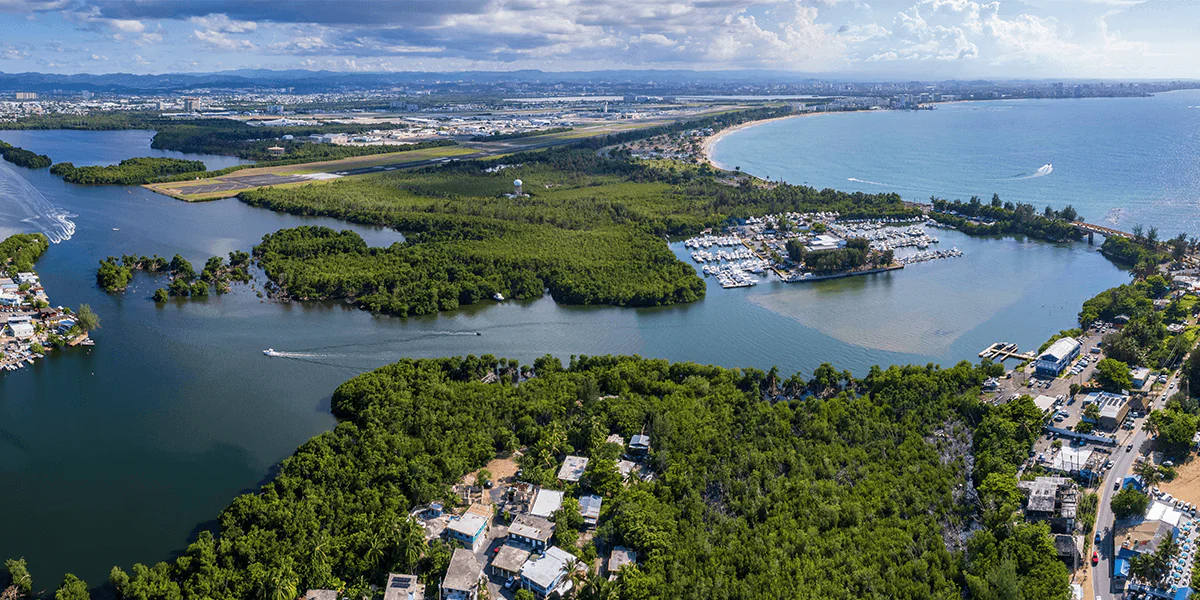
CDBG-MIT
CDBG-MIT
On January 27, 2020, the United States Department of Housing and Urban Development (HUD) allocated $8.285 billion to the Government of Puerto Rico in Community Development Block Grant Mitigation (CDBG-MIT) funds. CDBG-MIT funds represent a unique and significant opportunity for Puerto Rico to carry out strategic and high-impact activities to mitigate disaster risks and reduce future losses. Unlike Disaster Recovery funds, which have been awarded for hurricane-specific recovery, mitigation dollars can fund projects of a varying nature to serve the Island’s most important mitigation needs, regardless of tie-back to a specific disaster.
WHAT’S NEXT?
On December 3, 2020, PRDOH submitted the final draft of the CDBG-MIT Action Plan to HUD for review. The final plan included input from the public gathered through a robust stakeholder engagement process described in Appendix E of the Action Plan – The Stakeholder Engagement Report. Record of public comments can be found in Appendix G – MIT AP Public Comments. As illustrated in the timeline below, on April 19, 2021 HUD approved the CDBG-MIT Action Plan. The grant agreement was executed on May 12, 2021. Once the approval to expend the funds is received, PRDOH will be able to begin implementing the CDBG-MIT programs and develop the program guidelines.
TIMELINE | CURRENT STATUS

The Following is the TIMELINE AND CURRENT STATUS
- Input from stakeholders and preparation of the Action Plan
- Public Hearings and Public Comments
- Action Plan delivered to HUD 12/03/20
- HUD’s review of the Action Plan
- Partial letter recieved for amount $6.2B: Infrastructure, Planning y Multi-Sector
- HUD approved the Action Plan and the Grant Agreement was executed for access to funds on 5/12/21
- First Amendment to Action Plan approved by HUD on 10/17/22
- Development of Program Guidelines for implementation
- Programs Launch: HMPG July 2022, Infra-Competitive October 2022, SIH-MIT Janurary 2023, IPG-MIT February 2023, New Energy Program March 2023 and Infra-Health, Competitive April 2023
ONGOING PLANNING & COLLABORATION
PRDOH continues to engage and coordinate with the mitigation community and general public by:
- Updating the CDBG-MIT webpage as new information on CDBG-MIT funding becomes available,
- Providing resources regarding best mitigation practices such as white papers, case studies, and video presentations, and
- Utilizing email and social media to keep interested parties and the general public apprised of these activities and available resources.
If you want to receive these and other updates, register through the Public Participation Registration Program form on the CDBG-MIT website.
What’s the top risk to Puerto Rico?
PRDOH evaluated a total of eighteen (18) possible threats based on the common occurrence of these hazardous events in the US and the likelihood of occurrence in the Caribbean. The results of this analysis revealed Puerto Rico’s most threatening hazards at the state-wide (or Island-wide) level, which are ranked in the table below.
Risk Assessment Results at Island-Wide Level.

Please refer to the Determined Risk section of the Action Plan.
How did PRDOH determine top risks?
PRDOH utilized the Department of Homeland Security (DHS) extended risk definition to determine measurable risk in as universal a language as possible, making the results accessible for planning across federal funding sources beyond those addressed in this Action Plan. In order to complete the Risk Assessment, PRDOH had to first understand what hazard types exist and where those hazard types are most likely to occur within Puerto Rico’s geography in the future. PRDOH then had to understand how those geographically based occurrences interact with the natural and human-built environment and the population of Puerto Rico. The overlay of data from these components of the equation are what defined our understanding of the risk. To determine vulnerability, three (3) indicators were considered: critical infrastructure density, areas with high social vulnerability, and population density.
As shown below, risk is the potential for an adverse outcome assessed as a function of threats, vulnerabilities, and consequences associated with an incident, event, or occurrence. The equation shown below illustrates this concept showing that Vulnerability times Hazard times Consequence equals Risk.

How can I find the top risk to my neighborhood or home?
Risk assessment results are available in the Puerto Rico Hazard and Risks Dashboard, a transparent web-based tool accessible for public use (shown below). The tool allows citizens to view risk analysis data at the Island-wide, municipal, and 0.5-square-mile hex grid level. This is one of two GIS Dashboards created to inform the general public and facilitate users to explore the Risks, Hazards, and Critical Lifelines in all of Puerto Rico.
Use the following link to access the GIS Dashboards.

Coastal erosion in Radioville Urb of the Municipality of Arecibo.
Images Sent by: Héctor Torres on behalf of the Municipality of Arecibo
What are community lifelines?
Community Lifelines are defined by FEMA as functions that enable the continuous operation of critical government and business functions that are essential to human health and safety or economic security. Lifelines are the integrated network of assets, sectors, services, and capabilities that are used day-to-day to support the recurring needs of the community. Lifelines also represent an organizing principal for resource allocation and prioritization during and after a disaster.
FEMA identifies seven (7) lifelines as the following:

Geospatial information for the key sectors within four (4) critical lifelines has been compiled and made accessible to communities and citizens of Puerto Rico in the PR Critical Lifeline – Regional and Municipio Summaries – which is a publicly available dashboard tool (link to the GIS Dashboards).
How did PRDOH determine mitigation needs?
In addition to the data analysis conducted to reach a quantitative understanding of risk, PRDOH also conducted robust stakeholder engagement to gather qualitative data on mitigation needs. As with all dynamic planning processes, the feedback and input gathered during the Action Plan development process informs the document, but it is also a tool to ground-truth data and research prepared from existing studies, surveys, analyses, and reports. The data gathered through these public participation tools makes even more evident the importance of the Community Lifelines.
The collection of qualitative data from Puerto Rico citizens helped PRDOH to analyze mitigation needs from two perspectives: that of the everyday citizen and that of service provider entities. Survey responders were asked a series of questions regarding their recent experience with hazard events and resultant disruptions to the integrated Community Lifeline network of assets, sectors, services, and capabilities that are used day-to-day to support the recurring needs of the community.
Why did PRDOH select these mitigation programs?
Stakeholder Engagement played a fundamental role in the development of the mitigation programs proposed in the CDBG-MIT Action Plan. Survey inputs, as well as the proposed projects logs, public comments and feedback gathered through individual meetings and roundtables have been taken into account in the development and editing process of the Action Plan and its proposed programs. Many organizations, academic institutions, private entities, agencies, citizens, and municipalities have been active participants in the recovery and resilience of Puerto Rico since before Hurricanes Irma and María and during more recent disasters. Consulting these stakeholders and opening the space for discussion, idea exchange and feedback allowed PRDOH to minimize duplication of effort, while gaining invaluable input and knowledge from leaders that have Puerto Rico’s best interest in mind. Input from these meetings and the programs designed to address said input are further explained in the Stakeholder Engagement Report, Appendix E of the CDBG-MIT Action Plan. HUD comments provided during the review process also informed program design. Use the following link to access the Summary of the CDBG-MIT programs.







